On paper, Volkswagen’s idea to move its coupe upmarket seemed interesting. In reality, the Corrado came up against tough competition…including from within.
Thanks to the success of the Mustang in North America, Europe is beginning to dream of pony cars at the end of the 1960s. Logically, Ford drew the first in the fall of 1968 with the Capri and, two years later, Opel launched the Manta. It will be necessary to wait until 1974 so that Volkswagen, in full revival with its successful transition to front-wheel drive with the Passat, enters the dance with the Scirocco (the Golf will be presented 6 months later). The sympathetic coupe (whose lines were signed by Giorgetto Giugiaro) will have a successful commercial career until 1981, with 504,153 copies sold throughout the world.
Things go a little wrong with the second generation of Scirocco, which will only be sold in 291,497 units until 1992. Three reasons explain this drop in performance: the rise of the GTI segment (ironically, created by Volkswagen ), Japanese competition and a less catchy style, this time done in-house by Herbert Schäfer’s studio. The car is far from a failure but forces Volkswagen to rethink its approach.
Photo: Volkswagen
A Porsche at Volkswagen?!
The thing is not new (see the 914). But indeed, why not make the Scirocco II last a little longer and place its replacement in a higher price range? The idea is attractive because with the evolution of safety standards and the improvement of quality, cars are increasingly heavy and no longer support small entry-level engines (the Scirocco II could receive a 1 .3 liters in Europe). In addition, with declining volumes, it is advantageous to have a more expensive and therefore more profitable vehicle. Volkswagen knows that the Porsche 924 is at the end of its life, it could be good to seek out its buyers.
As before, the Volkswagen coupé takes up the technical basis of the Golf but this time of the second generation (McPherson front axle and semi-rigid axle at the rear). If the wheelbase is a little reduced (2,470 mm against 2,475 for the Golf), the length goes from 3,985 to 4,048 mm. The style is once again signed by Herbert Schäfer. The latter will be Volkswagen’s design director from 1972 to 1993. He is renowned for his conservative lines aimed first and foremost at communicating an impression of solidity. The Corrado coupé is no exception to the rule and the Belgian magazine The Automotive Monitor summarizes the situation perfectly by describing it as follows: “it has the sober beauty of the effective object”. For excitement, you’ll iron…
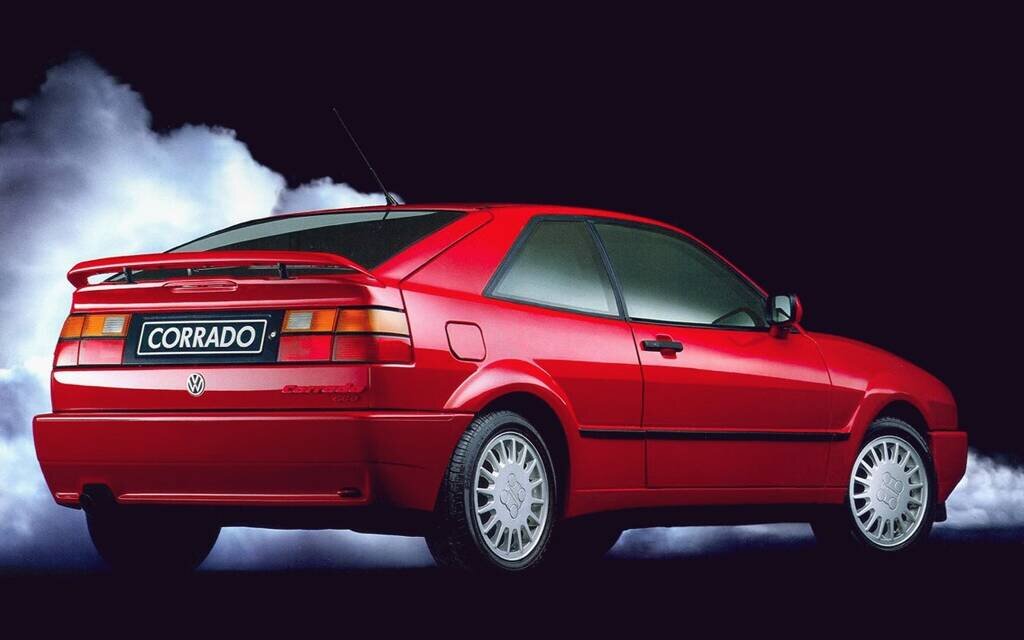
Photo: Volkswagen
The originality, it is rather necessary to seek it on the side of the retractable rear spoiler, a first at Volkswagen. This deploys 5 centimeters once the 120 km / h reached (70 km / h in North America). It reduces the lift effect on the rear axle by 64%. The Corrado also offers an effective Cx: 0.32 (against 0.38 for the Scirocco II). Inside, a third-generation Passat dashboard sits in front of the driver.
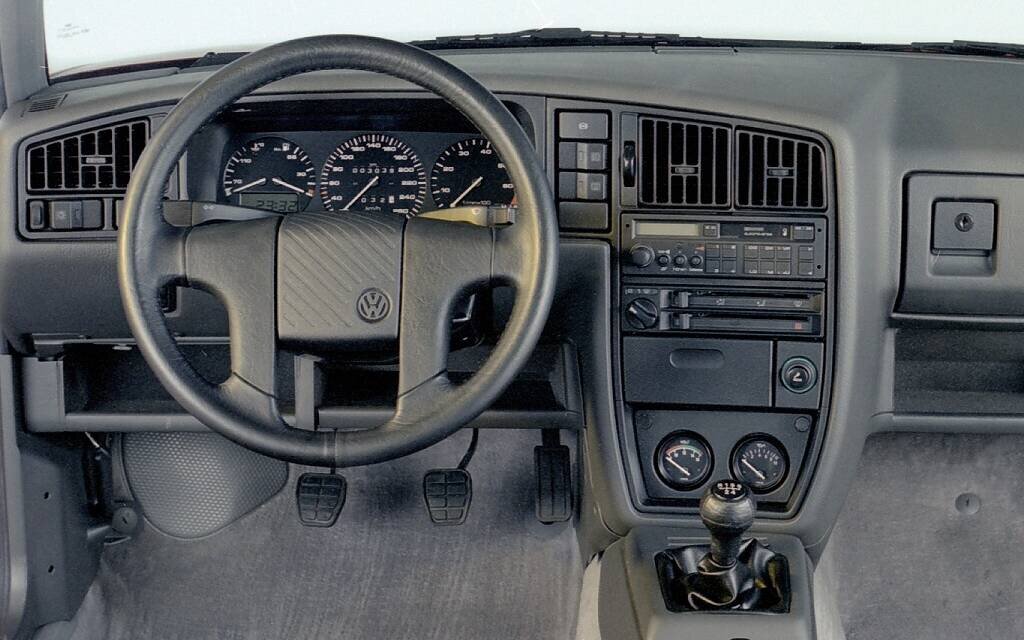
Photo: Volkswagen
The point G
The Corrado will offer two engines at its European launch: a 1.8-litre 16-valve with 136 horsepower taken directly from the Golf GTI 16S and a 1.8-litre 8-valve equipped with a technology unique to Volkswagen, the G compressor, for the 160 horsepower G60 version.
This technology is based on a patent by Frenchman Léon Creux, filed in 1905 but fallen into disuse due to manufacturing difficulties. The principle is simple: the air is compressed between two spirals, one fixed and the other mobile. The mobile spiral is mounted on an eccentric shaft which rotates 1.7 times faster than the motor. Moving closer and further apart, the scrolls pump air towards the center of the compressor where it is sent to a cooler before entering the cylinders. Volkswagen will start working on this compressor in 1978 and will only be able to market it in 1986 on the Polo G40 (in reference to the diameter of the spirals in millimeters), and still only in limited series.
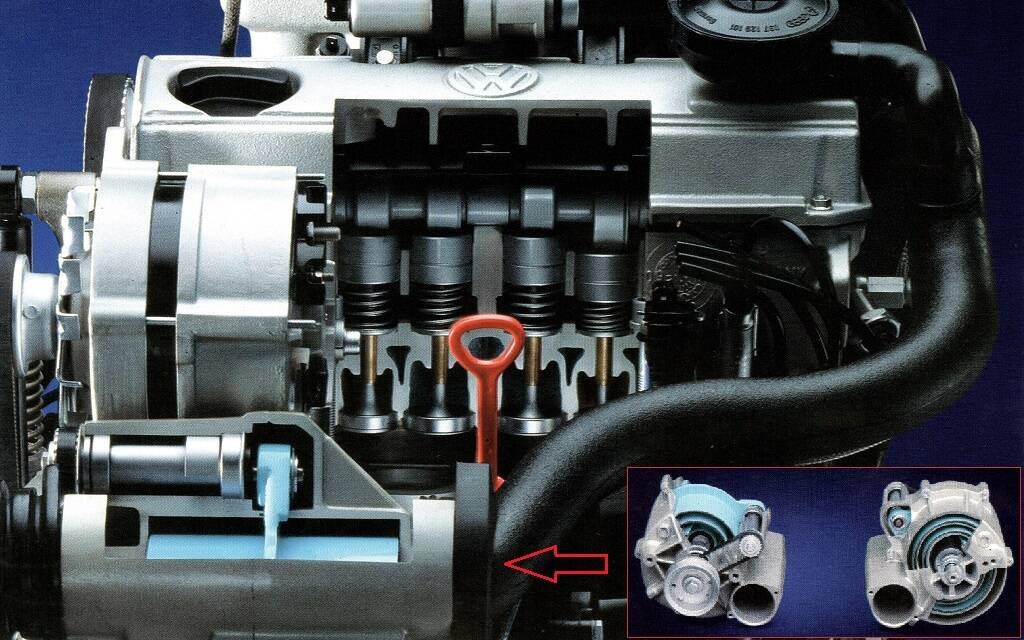
Photo: Volkswagen
It was not until 1988 that full-volume production began with a second series of Polo G40s and the Corrado G60. And even there, the ramp-up will be difficult, the manufacture requiring extremely sophisticated tools and materials for the time. This compressor will also find its way under the hood of the Golf and Passat and will be produced until 1992 in the 60 mm version and 1994 in the 40 mm version. It will turn out to be very unreliable, having a definite tendency to decay, damaging the reputation of the model. However, behind the wheel, it provides interesting sensations, allowing muscular revving up to 5,000 rpm. At the time, several testers wondered why Volkswagen did not combine the G supercharger and the multi-valve cylinder head. The robustness issue may be the answer.
On the run!
The Corrado was presented to the European press in Nuremberg on August 22, 1988 and made its first public appearance at the Paris Auto Show in October 1988. Like the Scirocco, it was produced at the Karmann factory in Osnabrück . Unlike the Scirocco, its name does not come from a wind but rather finds its origin in the word “correr”, or run in Spanish, chosen to demonstrate agility. At that time, Volkswagen hopes to manufacture 20,000 a year, with 8,500 destined for the United States and Canada.
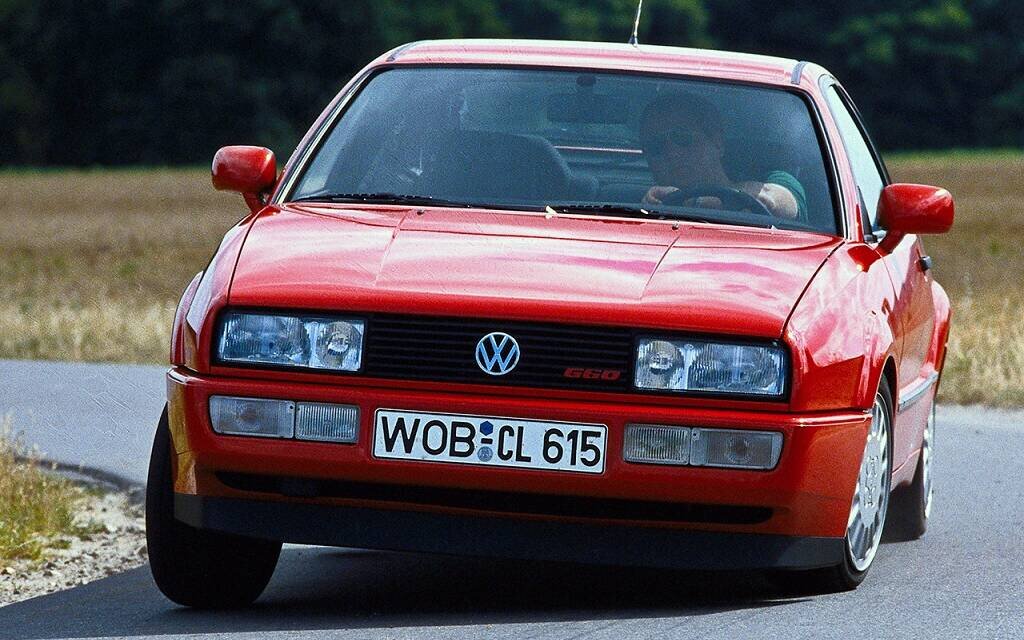
Photo: Volkswagen
And precisely, it arrives in Canada during the 1989 vintage but, curiously, will not be available in our southern neighbors until the following year. Only the G60 version is offered. Power only drops to 158 horsepower because all G60s are already sold catalyzed in Europe. The European press recognized the qualities of the Corrado in terms of handling, roominess (for a 2+2 coupe), construction and engine comfort. What confirms the Car Guide in its 1990 edition. On the other hand, the control by cables of the manual gearbox is unanimously against it on both sides of the Atlantic, as are the times, considered timid (7.7 seconds for the 0 to 100 km /h and 225 km/h in top speed all the same).
Unlike the European versions, the Corrado arrives well equipped in North America: air conditioning, cruise control, on-board computer, ABS, electric windows and mirrors, heated seats and a six-speaker audio system. The base price is set at $26,350 Canadian. Which isn’t bad, but a 16V Scirocco was $22,840 a year ago. And then the competition is very well placed price-wise: $20,695 for an Acura Integra GS, $22,500 for an Eagle Talon TSi Turbo 4×4, $24,560 for a Honda Prelude SR 4-wheel steering (1991), $24,840 for a Mazda MX-6 GT 4WD, $18,890 for a Nissan 240 SX and $22,598 for a Toyota Celica GT-S. And let’s not forget the main in-house rival: the $18,900 Golf GTI 16V. In short, the Corrado will have a lot to do to win.

Photo: Volkswagen
Waiting for the V6
The 4-speed automatic gearbox made its appearance in the 1991 vintage, as did the 15-inch BBS wheels. It was during the following model year that the great novelty arrived: the VR6 engine (a 6-cylinder in V with an angle between the benches of only 15 degrees, making it possible to use only a single cylinder head). With a displacement of 2.8 liters, it develops 172 horsepower (Europe is entitled to a 2.9-liter version of 190 horsepower), authorizing a 0 to 100 km/h in 6.9 seconds. The Corrado is slightly restyled (new front end, more domed bonnet, fenders widened to accommodate Passat B3 running gear), the gearbox control by cables disappears in favor of a classic linkage system and the equipment is reviewed. The G60 version is removed. The price then rises to $29,500.
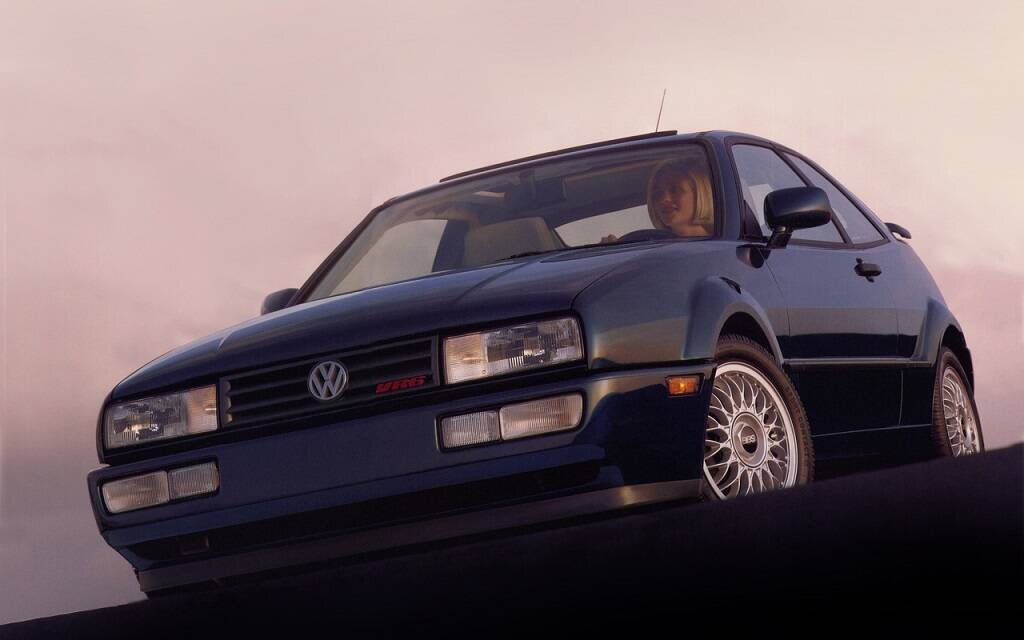
Photo: Volkswagen
The Corrado ended its career in the United States in the 1994 vintage and a year later in Canada and in Europe. Despite undeniable qualities, especially in V6, it has not been able to find its place. The country of Uncle Sam bought 18,648 copies and the exact number for Canada is unknown. The total production figure generally recognized on the internet is 97,521 copies. On its media site, Volkswagen announces 97,535 vehicles manufactured. On the other hand, a complete review of the Volkswagen Group’s financial statements from 1988 to 1995 reveals the following detailed volumes:
Production |
|
|
1988 |
3,206 |
|
1989 |
24,389 |
|
1990 |
21,893 |
|
1991 |
17,058 |
|
1992 |
16,085 |
|
1993 |
8,623 |
|
1994 |
3,787 |
|
1995 |
2,424 |
Total |
97,465 |
The tide has turned and coupes are less fashionable in the 90s. The Corrado will not be replaced and when the time comes for Volkswagen to try again the adventure of a 2+2 coupe, in 2008, the brand will choose the Scirocco’s name. A bit as if she wanted to forget the interlude…
